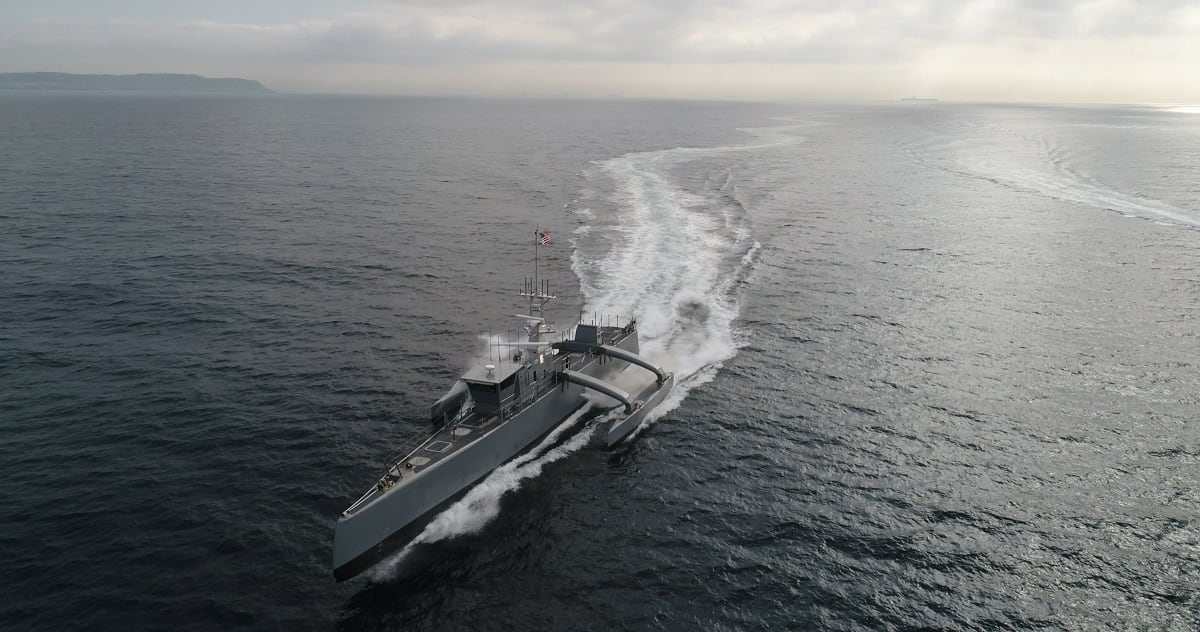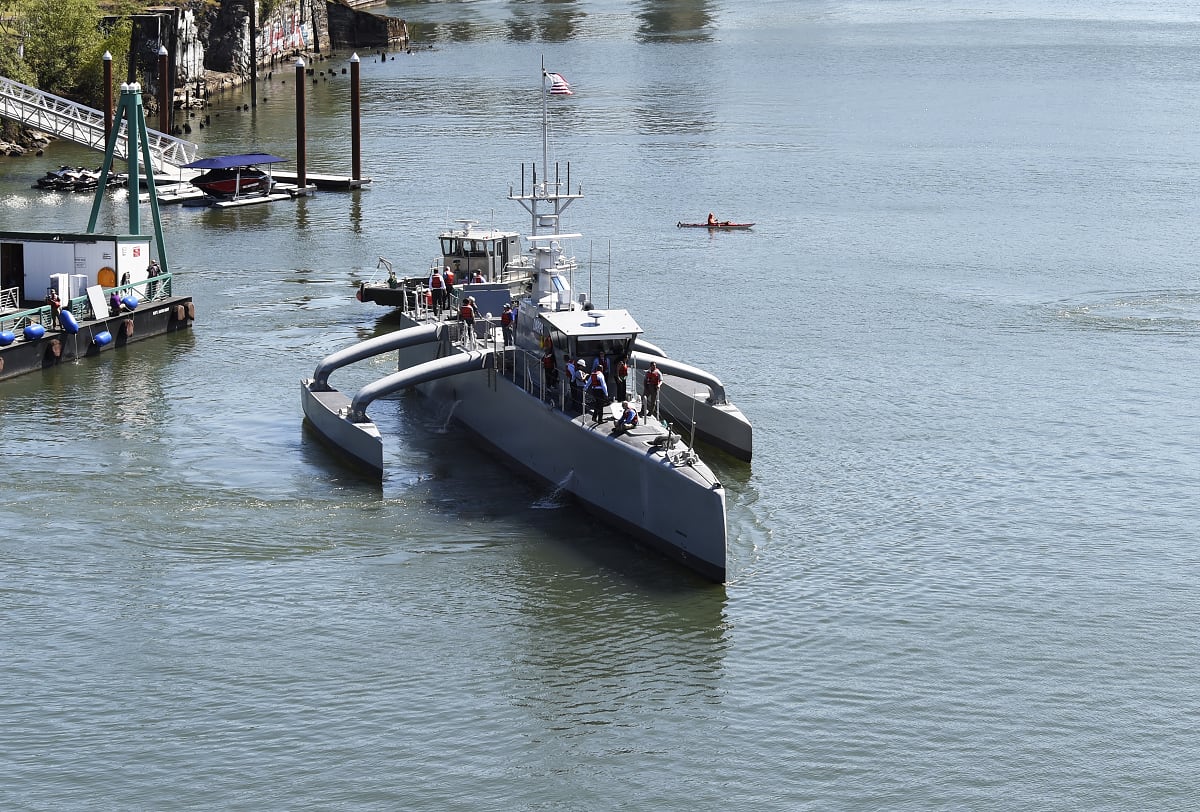WASHINGTON — Large and medium-sized unmanned surface combatants under development by the U.S. Navy will likely have crews aboard, at least at first.
As the force looks to integrate more unmanned surface vessels into its future fleet, the ships will likely have sailors aboard, at least in the near term while the Navy gets comfortable with new construct, said the Chief of Naval Operations N96 office’s surface warfare director, Rear Adm. Ron Boxall, in an interview with Defense News last month.
“I expect it won’t be immediately unmanned,” Boxall said. “We’re going to design these things with the idea that we’re going to put people on them in the near term. Then maybe move toward fully unmanned when we think the technology and the understanding of how we will use them matures.”
Boxall said the Navy will need to build trust in unmanned platforms with, for example, the Coast Guard, which is responsible for enforcing safe navigation rules in and around U.S. waters, but that the force needed to be ready for a future where unmanned surface vessels can serve as sensors and shooters in a distributed network of ships.
RELATED

“We don’t want to wait for that future, we want to be ready when that gets here,” Boxall said.
The concept behind using unmanned ships is part of the “distributed maritime operations” construct the Navy is developing as it prepares to square off with near-peer competitors China and Russia.
In high-end fights, anything putting out an identifiable electronic signal, such as high-energy, anti-air radars, will be vulnerable to electronic intelligence and surveillance equipment. The Navy is looking to mitigate that risk using unmanned ships that can serve as sensors and shooters but also protect larger manned surface combatants.
In this construct, the humans on manned platforms such as the FFG(X) future frigate and the new large surface combatant would act as command and control — and perhaps be able to stay passive and allow their drones to do the sensing and shooting.
According to Naval Sea Systems Command, the service is working on several unmanned surface drones that can enable this kind of networked warfare. A NAVSEA presentation at the annual Surface Navy Association symposium put forward details on the unmanned surface systems on which it is working:
- A large unmanned surface vehicle, or USV, that can distribute large sensors and fires.
- Medium-sized USVs that can carry smaller sensors and perhaps electronic warfare equipment.
- Small USVs that can tow mine-hunting equipment, as well as work to relay communications to their human overlords on manned surface combatants.
- Even smaller USVs that can work as communications relays as well as intelligence, surveillance and reconnaissance platforms.
Developing unmanned surface vessels is a key part of an agreement with NATO allies signed in July, according to a release from October.
“The use of unmanned systems is a potentially game changing leap forward in maritime technology,” the release read. “Working alongside traditional naval assets, these unmanned systems will increase both our situational awareness and our control of the seas.”
Getting smaller
The more unmanned vessels the surface fleet can integrate, the less the Navy will depend on massive, multimission surface combatants bristling with sensors and weapons, Boxall said.
“It’s a shift in mindset that says: Instead of putting as much stuff on the ship for as much money as I have, you start thinking in a different way,” Boxall said. “You start saying: ‘How small can my platform be to get everything I need to be on it?’
“We want everything to be only as big as it needs to be. You make it smaller and more distributable, given all dollars being about equal. And when I look at the force, I think: ‘Where can we use unmanned so that I can push it to a smaller platform?’ "
This is expected to be one of the things the Navy is looking to get out of its upcoming request for information from industry, currently being developed by Boxall’s N96 shop. It’s unclear when that RFI will be released.
In order to get to that future, NAVSEA is going to be chipping away at a few important areas, including:
- Safety, reliability and autonomous navigation.
- The ability to launch and recover offboard sensors such as mine-hunting drones from USVs.
- Integrating USVs with manned host platforms, which control the USVs from a distance.
The Navy has been chipping away at many of those areas with its Sea Hunter unmanned surface vessel developed by the Defense Advanced Research Projects Agency.
“We’ve got Sea Hunter out there today, and we’ve done some incredible things with [it] in terms of its autonomy: teaching it how to get from point A to point B safely,” Boxall said. “We’re learning about reliability of engineering. We’re learning about how to interact with [Sea Hunter] in terms of different payloads — what should we put on those things?
“We don’t think this should be very expensive, and we don’t think it should be hard to do.”
David B. Larter was the naval warfare reporter for Defense News.




